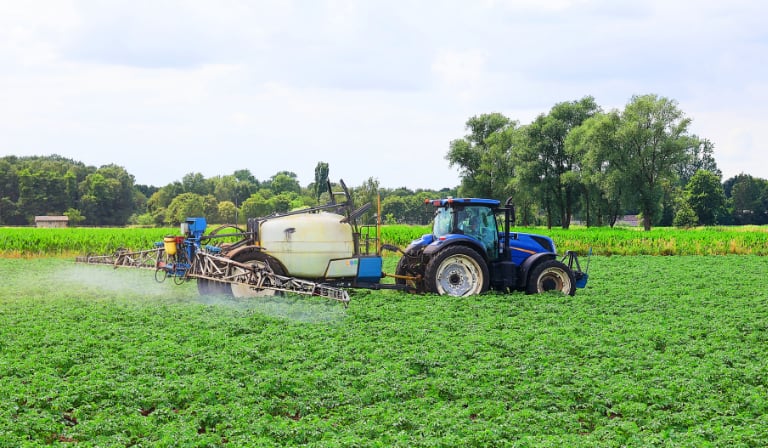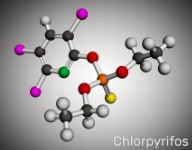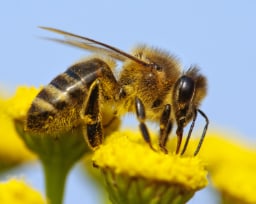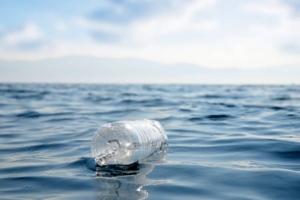On a beautiful, hot summer day, there is nothing like reaching for a pure ice-cold glass of water to quench your thirst. It may not be the first thing that comes to mind, but how fresh and pure is the water you drink? An alarming number of studies report the growing number of pesticides discovered in drinking water. The Safe Drinking Water Foundation states that over one thousand pesticides are used worldwide, and these dangerous chemicals seep into our drinking water in many ways. The exponential rise of pesticide-contaminated drinking water is becoming a primary global concern. Today, more than ever, it is an essential question as to what is lurking in my drinking water.
What Hidden Ingredients Are Lurking In Your Drinking Water?

Pesticides were created to help eliminate pests and represent a wide-ranging spectrum of chemicals and products. Differing pesticides will cause different reactions and health issues depending on the ingredients and chemicals used in that product. Knowing the pesticides you are using and their chemical makeup is vital if any health concerns arise.
Pesticide exposure causes harmful health concerns in varying forms, such as inhalation via the lungs, absorption through the skin or eyes, and ingestion by mouth. Health issues can develop during exposure, hours or days later, or long-term, with health effects presenting years later, such as cancer. Exposure to highly concentrated pesticides for extended periods increases the risk of health problems.
Pesticides Cause Harmful Exposures
Pesticides are not only contaminating your produce, but they are also contaminating your well, bottled or tap water, and any other drinks made with your tap water. When you take a glass of water or make a cup of tea, did it ever occur to you that it may contain pesticides? Unfortunately, these days, the question should be not ‘if’ but ‘what’ pesticides are in my drinking water and why?
It is critical these days to know what is in your drinking water. Although organizations like the EPA and Health Canada monitor drinking water contaminants, it is startling to know that many pesticides are not regulated or monitored. No doubt, pesticide exposure causes severe human health risks and could even be fatal, depending on the exposure.
The Far-Reaching Effects of Using the Herbicide Atrazine

Atrazine is a weed-killing herbicide that is often heavily used on farm crops. It is a manufactured white powder pesticide that is odorless and dissolves in water. The pesticide Atrazine is the second most used herbicide in the United States, with Glyphosate now being the first. It is estimated that over 70,000 pounds of Atrazine is used on three crops: sorghum, sugarcane, and corn annually. Atrazine is also highly used in the United States to prevent weeds from growing on railroad crossings, highways, golf courses, and some residential uses. It is also one of the heaviest sprayed agricultural herbicides in America. Unfortunately, it is not surprising to learn that Atrazine is one of the top pesticides found in drinking water in the United States. In Canada, Atrazine is still used to treat certain crops but has limited agricultural use and is no longer available for residential use.
The Environmental Working Group’s current Tap Water Database shows that an alarming 36 States detect Atrazine in their drinking water. Interestingly, in 2003, Europe banned Atrazine due to widespread groundwater contamination concerns. It is staggering that Atrazine has been banned or phased out in 44 countries, including Asia, South America, Europe, and Africa. Despite these bans, the United States continues the widespread use of Atrazine. Atrazine is under review in Canada but is still used commercially in major switchgrass, sorghum, and corn crops, with applications only allowed once or twice annually. A Canadian study of Atrazine in 2017 sadly concluded that levels found in groundwater and drinking water did not pose serious health or safety risks to humans.

The Harmful Health Concerns of Atrazine-Tainted Drinking Water
Atrazine may be a highly effective herbicide, but drinking tainted water can produce hazardous health issues that you should not ignore. Atrazine is a known endocrine disruptor linked to numerous health issues, including cancer and reproductive health. Numerous studies show that Atrazine can cause harmful health issues in animals and humans at low and high levels. These scientific studies show exposure to Atrazine suppresses certain hormones, which can lead to adverse reproductive, neurological, and developmental effects.
Atrazine has long-lasting effects on crops, surrounding land, and waterways, but it is far more reaching with its harmful and possibly fatal health effects. It is well-documented that it may cause endocrine disruption, congenital disabilities, genital deformities, and reduced fertility.
Atrazine is also linked to certain types of cancer. Studies report a possible link between females living near or working with Atrazine and breast cancer. Canadian research said when males are exposed to consistent levels of Atrazine in their drinking water, they have an increased risk of developing stomach cancer. Studies also highlight that men working in occupations such as farming are far more likely to develop prostate cancer and have lower sperm counts. For women drinking atrazine-tainted water, an increase of only 0.05 ppb (parts per billion) increases the risk for stomach cancer.
Links to kidney, liver, and heart damage have been found in animals and are being studied in humans. Although there is exposure from ingesting the contaminated crops, Atrazine is becoming one of the most found herbicides in America’s drinking water and in many other countries. Atrazine travels through the air at alarming rates, hundreds of kilometers contaminating lakes, rivers, and streams. Other health effects associated with Atrazine exposure include congestion of the lungs, heart, and kidney, weight loss, adrenal gland damage, cardiovascular damage, low blood pressure, muscle spasms, and muscle degeneration.

In 2020, the Environmental Protection Agency released a report stating that Atrazine will likely harm more than 1,000 species of already endangered plants and animals. Ironically, just two months prior to the information, the EPA reapproved the use of Atrazine for another 15 years. Most of the Atrazine in the environment comes from its crop applications and a small amount from manufacturing, transport, and disposal. When applied to soil, Atrazine remains there for days to months and rarely for years, but when it enters any body of water, it stays there for long periods due to its slow breakdown in water. Since Atrazine remains in the water for long periods without safe removal, even small exposures can build up over time.
The Dangers of Organophosphate Insecticide Chlorpyrifos Found in Drinking Water

Organophosphates are another form of pesticide known as insecticides, but where they originated from is shocking. Chlorpyrifos was derived from powerful chemical substances used by the Nazis as neurotoxins or chemical warfare in World War II. Chlorpyrifos was one of the most widely used organophosphate insecticides, first applied to agriculture in 1965. Chlorpyfiros, also known as a neurotoxic pesticide, has been used in over 100 countries worldwide in residential, commercial, and agricultural settings. By 2007, it was estimated that over 11 million pounds of Chlorpyrifos were applied to U.S. crops that year. The crops most treated with Chlorpyrifos were fruit trees, bananas, apples, corn, almonds, oranges, and cotton. It is also currently used in Canada to treat canola, potatoes, garlic, and wheat crops.
This robust pest control not only takes care of unwanted insects but can also cause persistent and harmful health effects in humans. The World Health Organization now classifies Chlorpyrifos as a Class II: moderately hazardous substance. In high doses, it can cause acute toxicity in humans.
Short or Long-Term Chlorpyrifos Exposure Linked to Serious Health Issues
Studies over the past few decades show that Chlorpyrifos is harmful to both the environment and human health, highlighting the fact that even low-dose exposures can cause severe brain damage in children. It is also highly toxic to the development of children’s nervous system, and prenatal exposure is associated with loss of memory, attention disorders, motor development delay, reduced I.Q., and lower birth weight. Because children are smaller in size and exposed to higher concentrations, they are more vulnerable to the harmful effects of Chlorpyrifos.
For those who live and work with Chlorpyrifos, such as farmers and their families, continued insecticide use can lead to adverse body changes such as oxidative stress and blood, muscle, kidney, skin, and eye disorders. In recent studies, low-dose exposure for short periods showed lasting neurological changes that affected cognitive and emotional processing abilities. Excessive exposure can result in poisoning and potentially be fatal.
At the same time, short-term or acute human exposure examples include reports of dizziness, nausea, blindness, rashes, blisters, diarrhea, and stinging eyes. Long-term chronic exposure can cause reproductive harm, congenital disabilities, endocrine system disruption, neurological and developmental toxicity, and cancers.
A study of over 50 pesticides found Chlorpyrifos to pose the highest risk of developing lung cancer in pesticide application workers with acute and low-level repeat exposures. Adult agricultural workers with repeated low-level exposures to Chlorpyrifos have an increased risk of lingering health issues, including developmental, neurological, and autoimmune disorders with symptoms such as severe muscle tremors, loss of bowel control., seizures, or loss of consciousness.
The Dangers of Chlorpyrifos Are Causing It to be Banned

Interestingly, as early as 2001, the United States and Canada banned Chlorpyrifos for residential uses but continued applying it on crops. In 2016, the United Kingdom banned Chlorpyrifos, and many other countries also halted its use. By 2020, this harmful pesticide was prohibited throughout the European Union. It took until 2021 for the EPA (Environmental Protection Agency) to announce that it banned Chlorpyrifos on its food crops. Despite its known harmful health effects in Canada, a questionable three-year phase-out of Chlorpyrifos was enacted, allowing it to be applied to Canadian crops until December 2023. There are environmental action groups legally challenging this decision.
It is abundantly clear that the organophosphate pesticide Chlorpyrifos is highly toxic and dangerous. It should also be abundantly clear that Chlorpyrifos should not be a concern in your drinking water. Still, unfortunately, due to its heavy use globally, it has become a dangerous drinking water concern. Chlorpyrifos has covered our staple food crops for years, causing far-reaching soil, groundwater, and drinking water contamination and has led to treacherous and toxic health concerns.
One of The Newest And Most Widely Used Pesticides: Neonicintoids
As the organophosphate pesticide Chlorpyrifos will no longer be in use, there is still a need to control pests in agricultural, industrial, and residential settings. Enter the new form of pest control: neonicotinoid pesticides, otherwise known as neonics.
Neonicotinoids are a newer class of synthetic insecticides available since the 1990s. They are the fastest-growing group of pesticides widely used in crop production and veterinary medicine. Some of the main neonicotinoids are Imidacloprid, acetamiprid, clothianidin, thiamethoxam, and dinotefuran; their use has grown due to their broad spectrum effect on chewing and sucking pests. Neonicotinoids’ widespread action has made them a ready replacement for organophosphate pesticides such as Chlorpyrifos.
Increased Use of Neonic Pesticides Show Harmful Environmental and Human Effects
Neonicotinoids are designed to kill insects by working through the plant systemically, being absorbed from the root, stems, leaves, and up to the pollen and nectar. Once the insects are exposed, the insecticide produces acute and fatal nerve damage. The toxic insecticide residue on the plants is long-lasting and spreads to the surrounding soil and waterways.

In theory, neonics should have a high target for insects and a low risk for non-target organisms and the environment. However, we are discovering the opposite; they carry an increased risk for harmful and even detrimental effects to all they come in contact with.
Neonicotinoids have become the most highly used insecticides worldwide. One of their most extensive uses is the pretreatment of crop seeds; most soybean and corn seeds are treated and coated with neonics before planting. Finding pure seeds that have yet to be treated with neonics is becoming difficult. Neonics are also widely applied on houseplants and Christmas trees for lawn care and flea control on pets.
Growing Health Concerns Raised Over Noeonics in Drinking Water

As neonicotinoids use has grown, so has an extensive list of serious concerns about the safety of these global insecticides. Environmental concerns show that neonicotinoids harm and kill bees, songbirds, and aquatic invertebrates. It is estimated that U.S. agriculture is 40 times more toxic to insects, primarily due to the introduction of neonicotinoid insecticides. Like organophosphate pesticides, Neonicotinoids travel easily from the treated seed or plant, spreading swiftly to surrounding soil and neighboring plants, and like other pesticides, they dissolve quickly in water. Neonics are commonly found in seasonal water runoff, allowing them to seep into groundwater, rivers, streams, and wetlands and make their way into tap water. (most concerning, tap water).
Neonicotinoid exposure is concerning enough, but scientists are raising new concerns that neonics that travel through water treatment plants appear to be producing even more hazardous chemical by-products that can be found in your drinking water. This disturbing discovery highlights the dangers of widespread neonic-tainted drinking water. It seems Neonicotinoids are showing they do their job of killing insects, but their dangerous effects do not stop there.
These Neonicintoid insecticides are chemical neurotoxins that produce long-lasting results that can cause severe and dangerous health issues. Studies show neonics are not as target-specific as they claim to be and can harm the environment and human health. Also, mixing more than one form of neonic combined with other pesticides simultaneously to treat seeds and crops is common practice, further increasing unknown hazardous health risks. An alarming and eye-opening fact is that most local or municipal water treatment does not remove all these neonic insecticides or their dangerous health-altering by-products, exposing you and your family to hazardous insecticide-contaminated drinking water.

The fact that Neonicotinoids are neurotoxic means they interfere with the nervous system and the brain. Scientific studies show early life exposure can have detrimental consequences on the developing brain and nervous system. Further research shows possible malformations of the heart and brain, memory loss, and autism spectrum disorder with unintentional exposures.
While Neonics are a relatively new type of pesticide and have not been researched as extensively as other toxic pesticides, there are indications that they can be harmful. As a result, caution is advised during pregnancy and early life to avoid exposure. Warning notices have been issued regarding this matter.
One of the most widely used neonics in household products is Imidacloprid, one of the main ingredients in bed bug and pet flea treatments. According to the EPA, there has been an alarming increase in poisoning incidents, with symptoms ranging from difficulty breathing, wheezing, vomiting, skin rashes, kidney failure, muscle tremors, lockjaw, and memory issues. This example shows one type of neonic and the degree of poisonous health issues it produces, but there are several other neonics, each with its toxic concerns.
Neonics bind to nerve cell receptors in insects, causing overstimulation and destruction. When humans are exposed to Neonics, brain cell receptors are affected too, causing learning, pain, mood, memory, and sensory processing issues. Neonics exposure is also linked to neurological changes, osteoporosis, congenital disabilities, metabolic and hormonal changes, and liver cancer. These are preliminary studies, and with more currently being done, more health risks will undoubtedly emerge with continued neonicotinoid exposures.
Ensure Your Drinking Water is Safe
Once in the water supply and the water treatment plants, some neonicotinoid residue (level) remains, making your tap water even more contaminated than you thought. It is another contaminant to add to the already growing list of toxic chemicals showing up in our local tap water. Environmental Action groups are already fighting to see these neurotoxic insecticides banned in many countries worldwide.
Although most local water is heavily tested and treated, it still falls short of removing these synthetic toxic chemicals; no level of dangerous pesticide should be acceptable in your drinking water. The water treatment process in your local municipality may generate higher levels of toxic by-products. These days, it is imperative to purchase a home water purification system to ensure the removal of toxic Atrazine, Chlorpyrifos, Neoicoinintoids, pesticide by-products, and other harmful contaminants such as chlorination by-products, VOCs, heavy metals, and pharmaceuticals.
A Reverse Osmosis Water Filtration System removes up to 99% of toxic pesticides and other harmful chemicals. Reverse Osmosis systems provide clean, pure drinking water using a special semipermeable membrane that pushes tap water through the filter while removing harmful contaminants. RO systems are easily installed, usually under the kitchen sink, and have a separate faucet. They are environmentally friendly, use little or no electricity, and reverse osmosis filtration does not use any chemicals.

Homeowners who want to provide pure filtered water for drinking and throughout every home tap may choose a Whole Home Reverse Osmosis Water Filtration System. A Whole Home RO system is a more significant investment, requires a more detailed home installation, and is usually used for more complex household water issues. An Excalibur water treatment professional will start by testing your water and work with you to determine the right Reverse Osmosis system for your water needs.

Another excellent water treatment option for removing harmful pesticides from your drinking water is a specialized Chemical Removal Filter System. An Excalibur Chemical Removal System can remove most volatile and industrial chemicals, including pesticides, using highly effective activated carbon filters that adsorb the volatile chemicals. All water hardness, iron, and sulfur must be removed from your household water before passing through most chemical removal filters.
A professional water treatment specialist can test your water and help determine the best water purification system for your home and budget. A water purification system gives you peace of mind while drinking pure, safe, crystal-clean water.
For more on water treatment solutions that remove or significantly decrease toxic pesticides from your drinking water, such as an Excalibur Reverse Osmosis Water Filtration System, a Whole Home Reverse Osmosis Water Filtration System, or a Chemical Removal System, please contact us.


